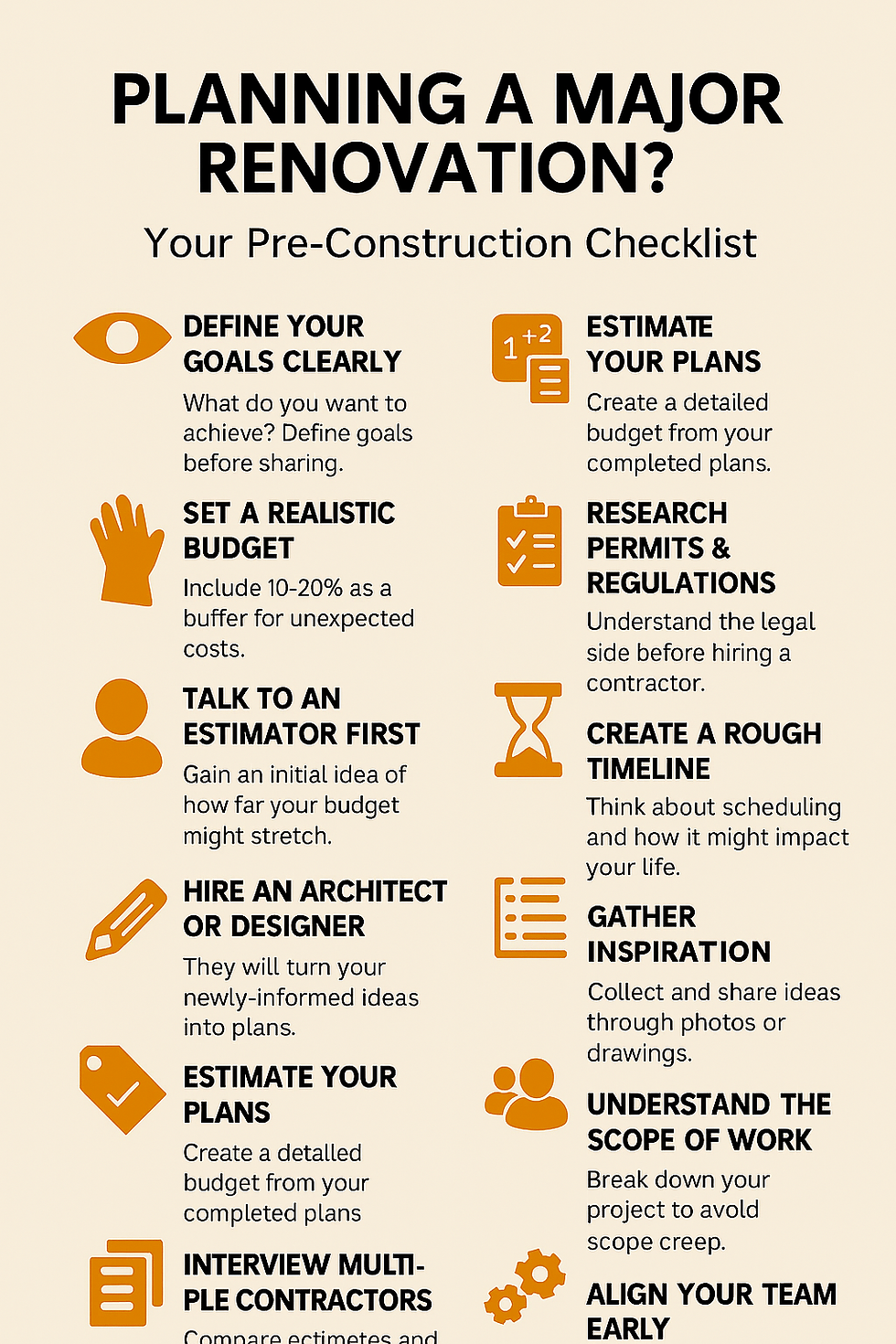Hidden Costs in Construction Projects — and How to Plan for Them
- Deen Gabriel

- May 19
- 2 min read
When building a home, office, or any structure, it’s easy to get caught up in the excitement of plans, permits, and choosing finishes. But behind every beautiful project, there’s a financial side many forget to plan for — hidden costs. These are unexpected expenses that can derail your budget if you’re not prepared.

In this article, we’ll unpack some of the most common hidden costs in construction projects and show you how to plan ahead to avoid nasty surprises.
🚧 1. Site Preparation and Soil Conditions
Before the first brick is laid, the ground must be ready. Costs can spike if your site:
Requires excavation or leveling
Has poor soil conditions needing reinforcement
Needs tree removal or rock blasting
Tip: Always conduct a geotechnical (soil) survey before finalizing your budget.
🛠 2. Changes in Design or Scope (Variations)
Even small design changes during construction can add up quickly — especially if materials must be reordered, work must be redone, or timelines are extended.
Tip: Finalize your design as much as possible before work begins. Avoid making impulsive changes mid-project.
⚡ 3. Upgrades and Finishing Choices
That fancy tap, imported tile, or extra window may not have been in the original quote. These "little extras" can double your finishing costs.
Tip: Ask for a detailed breakdown of what's included and what counts as an upgrade. Set a clear allowance for finishes and stick to it.
🧾 4. Regulatory and Compliance Costs
Building permits
Municipal service connections (water, sewer, electricity)
Environmental assessments
These costs are often overlooked but are essential for legal compliance.
Tip: Speak to your local municipality early in the planning phase to understand all fees and approval timelines.
🧱 5. Material Price Increases
Construction materials like steel, cement, and timber are affected by global supply chains. Prices can fluctuate, especially on long-term projects.
Tip: Lock in material prices where possible or add a contingency buffer (typically 10-15%) for potential price hikes.
👷 6. Labour Delays and Overtime
Delays due to bad weather, poor planning, or subcontractor issues can lead to extra labor costs, especially if your project falls behind schedule.
Tip: Work with a reputable contractor who has a reliable team and clear timelines. Include penalty or incentive clauses in your contract if possible.
🧯 7. Unexpected Repairs or Rework
If you’re renovating or building on an existing site, you may discover hidden problems — old plumbing, electrical issues, or structural damage.
Tip: Conduct a thorough inspection and allocate a contingency fund (10–20% of the budget) for unknowns.
💡 How to Plan for Hidden Costs
✅ Get a detailed quote: Break down all costs line-by-line. Understand what’s included — and what’s not.
✅ Include a contingency fund: Set aside 10–20% of your total budget for unexpected expenses.
✅ Work with professionals: Experienced contractors and quantity surveyors can help you foresee potential problem areas.
✅ Communicate clearly: Keep the lines open between you, your contractor, and your architect. Misunderstandings cost money.
🧮 Final Thoughts
No one likes surprises — especially costly ones. While hidden costs in construction are sometimes unavoidable, awareness and planning go a long way in protecting your budget. By understanding where these hidden costs can appear, you’ll be better prepared to handle them and keep your project on track.






Comments